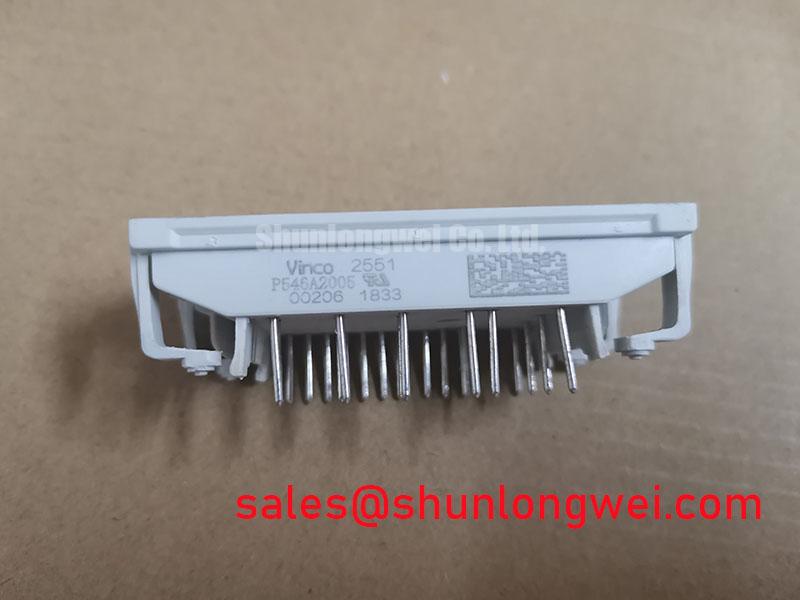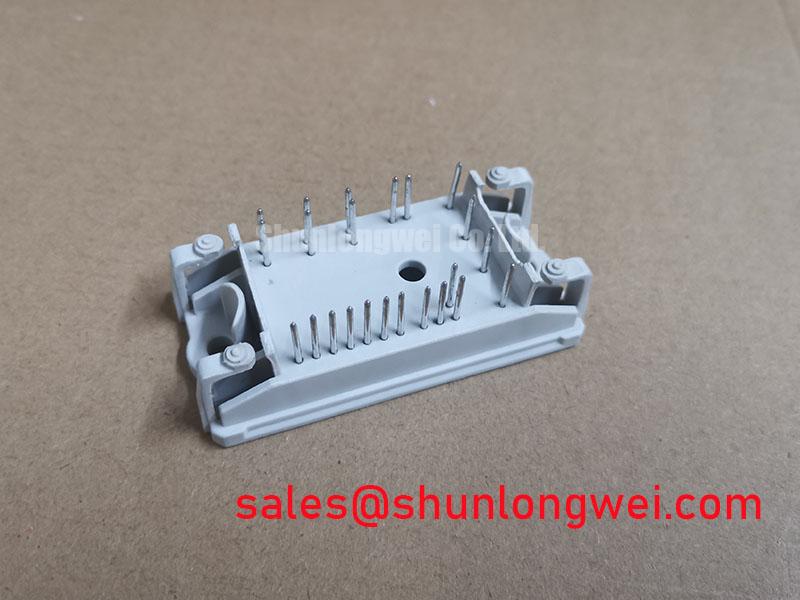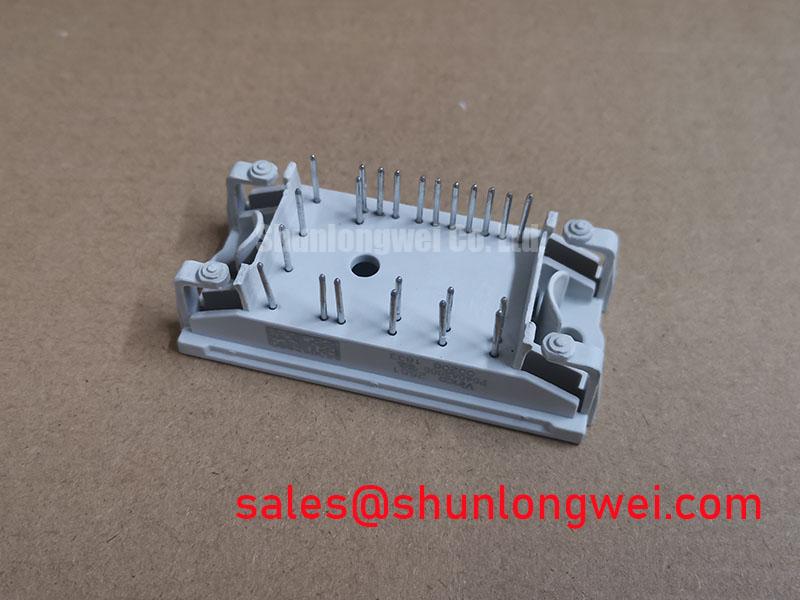Content last revised on November 16, 2025
vinco P546A2005 Three-Phase Diode Rectifier Module
Product Overview & Key Highlights
Engineered for High-Current Rectification with a Focus on Thermal Stability and Lifetime Reliability
The vinco P546A2005 is a high-performance three-phase rectifier module designed for demanding industrial applications. It delivers a robust front-end power conversion solution centered on exceptional thermal management and operational longevity. With key specifications of 1600V | 200A | Rth(j-c) 0.15 K/W, this module provides two critical engineering benefits: superior power density and enhanced system reliability. It directly addresses the need for a rectifier that can reliably handle high continuous currents while simplifying thermal design. For high-current industrial drives up to 100kW, the P546A2005's combination of 200A capability and low thermal resistance makes it the optimal front-end rectifier.
Application Scenarios & Value
System-Level Benefits in Industrial Drive and UPS Front-Ends
The P546A2005 is engineered to serve as the core front-end rectifier in a range of high-power systems. Its primary application is in the input stage of Variable Frequency Drives (VFDs), where it converts AC line voltage into a stable DC bus for the inverter stage. What is the primary benefit of its low thermal resistance? It enables higher power density and simplified heatsink design. In a typical VFD application, engineers face the challenge of managing heat generated during rectification, especially under heavy load. The module's low thermal resistance of just 0.15 K/W per diode acts like a wide, unobstructed pipeline for heat, allowing it to be transferred efficiently from the semiconductor junction to the heatsink. This superior thermal transfer reduces the required heatsink size, enabling more compact cabinet designs and lowering overall system cost.
This same characteristic makes it invaluable for large Uninterruptible Power Supply (UPS) systems and welding power supplies, where reliability and the ability to handle sustained high currents are non-negotiable. The module's impressive 5500A forward surge current rating provides a critical safety margin, ensuring it can withstand the inrush currents typical of large capacitive loads or motor startups without degradation. For systems requiring a complete power conversion solution, the P546A2005 rectifier stage pairs effectively with inverter-stage modules like the CM600DX-24T which handle the subsequent DC-to-AC power switching.
Key Parameter Overview
Decoding Key Specifications for Thermal and Electrical Robustness
The technical specifications of the vinco P546A2005 are tailored to provide a dependable and efficient power rectification solution. The table below highlights the parameters most critical for system design, integration, and long-term performance evaluation.
| Parameter | Value | Engineering Significance |
|---|---|---|
| Electrical Specifications | ||
| Repetitive Peak Reverse Voltage (VRRM) | 1600V | Provides substantial safety margin for operation on 400V, 480V, and even 690V AC lines, protecting against voltage transients. |
| Average Forward Current (IFAV) | 200A @ Tc=80°C | Enables high power throughput, suitable for motor drives in the 75-110 kW class and similarly rated power supplies. |
| Forward Surge Current (IFSM) | 5500A | High immunity to fault conditions and inrush currents, enhancing system robustness and preventing premature failure. |
| Thermal & Mechanical Specifications | ||
| Thermal Resistance, Junction-to-Case (Rth(j-c)) | 0.15 K/W | Indicates exceptional heat transfer efficiency, leading to lower operating temperatures and supporting compact system designs. |
| Isolation Voltage (Visol) | 4000V | Ensures high dielectric strength between the terminals and the baseplate, simplifying system safety compliance (e.g., IEC 61800-5-1). |
Technical Deep Dive
Inside the P546A2005: A Focus on Thermal Pathway and Contact Integrity
A deeper analysis of the vinco P546A2005 reveals design choices aimed squarely at maximizing reliability under strenuous industrial conditions. The foundation of its thermal performance lies in the use of an advanced substrate material, likely Aluminum Nitride (AlN), which offers significantly higher thermal conductivity compared to conventional Alumina (Al₂O₃). This choice is central to achieving the low Rth(j-c) value. For an engineer, this means less thermal budgeting guesswork and a more predictable performance envelope.
Furthermore, the high surge current rating of 5500A is not just a number; it is a direct reflection of the robust internal construction and the quality of the diode chips. Think of this surge capability as the structural integrity of a dam designed to withstand a 100-year flood. While the river (current) flows normally most of the time, the dam's ability to handle a sudden, massive surge is what guarantees the long-term security of the entire system downstream. This resilience is critical for preventing catastrophic failures during unpredictable grid events or demanding load cycles.
Frequently Asked Questions (FAQ)
Engineering Clarifications on the P546A2005
How does the 1600V V(RRM) rating benefit a system designed for a 400V AC line?
A 1600V rating provides a safety factor of approximately 2.8 against the peak line voltage (~565V) of a 400V system. This generous margin is crucial for absorbing voltage spikes caused by lightning, utility switching, or inductive load switching, thereby enhancing system reliability and preventing field failures in environments with unstable power grids. What is the benefit of its high surge current rating? It provides robustness against fault conditions.
What is the practical impact of the module's 0.15 K/W thermal resistance on heatsink selection?
This low thermal resistance value directly translates to a lower temperature rise between the semiconductor junction and the module's case. For a given power dissipation, the case will be cooler compared to a module with higher resistance. This allows engineers to either use a smaller, less expensive heatsink for the same operating temperature or run the module at a higher power output with the same heatsink, improving power density and potentially reducing Bill of Materials (BOM) cost. A comprehensive approach to thermal management is key to maximizing these benefits.
For further evaluation or to discuss specific application requirements, please review the official datasheet or contact our technical support team for detailed guidance on integrating the vinco P546A2005 into your power conversion system.








